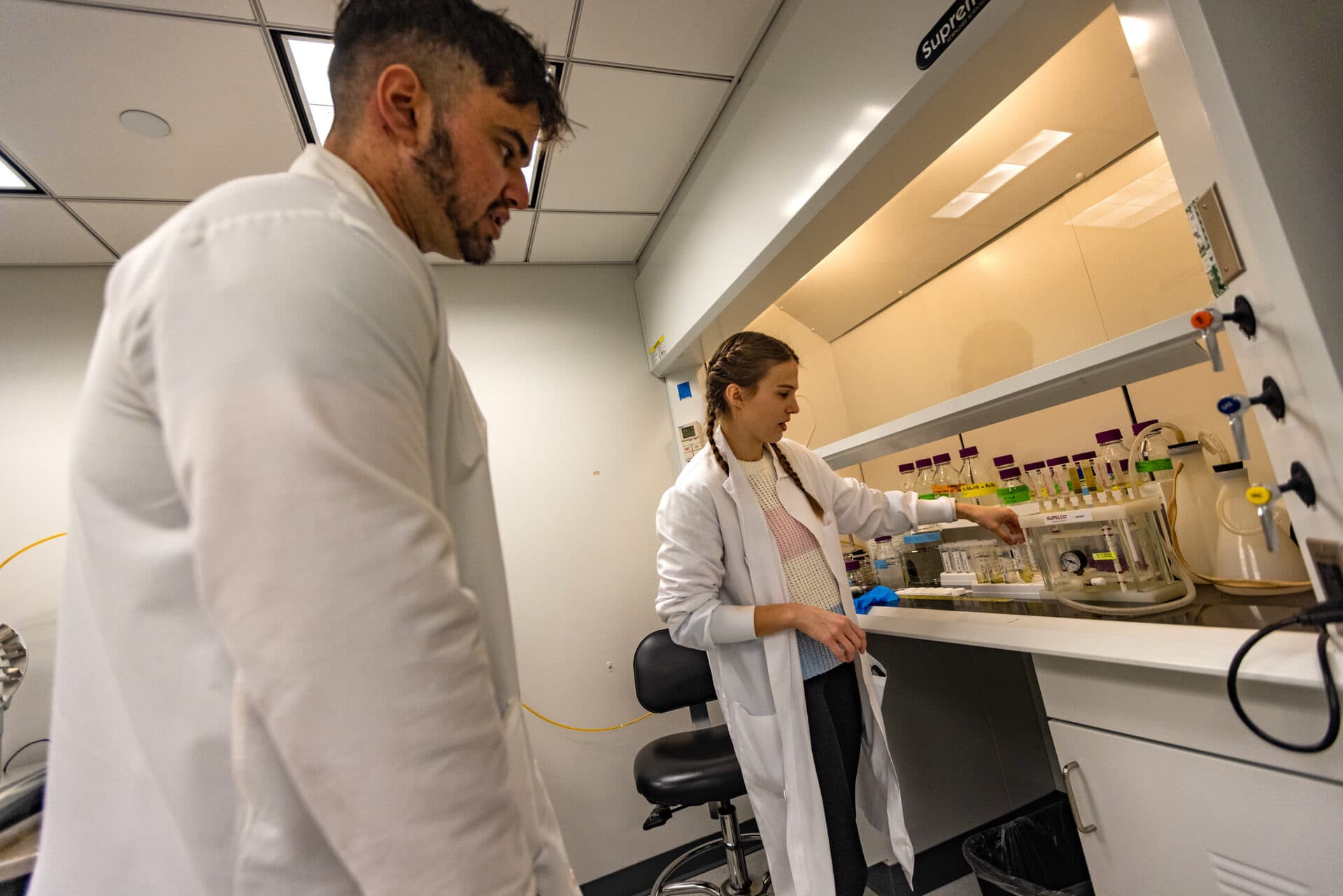Report on PFAS Contamination in U.S. Waterways and Implications for Sustainable Development Goals
Introduction and Summary of Findings
A recent analysis conducted by the Waterkeeper Alliance has identified significant contamination of United States waterways with per- and polyfluoroalkyl substances (PFAS), commonly known as “forever chemicals.” The study links this pollution directly to sewage sludge and wastewater treatment plants across 19 states. This finding presents a substantial challenge to the achievement of multiple Sustainable Development Goals (SDGs), particularly SDG 6 (Clean Water and Sanitation).
The research employed a novel methodology, testing water quality both upstream and downstream from 32 sites, including wastewater treatment facilities and agricultural fields where sewage sludge is applied as fertilizer. The results indicate a clear pattern of pollution:
- Downstream water samples showed higher concentrations of at least one PFAS compound in 95% of the locations tested.
- This strongly suggests that sewage and wastewater management practices are a primary source of PFAS contamination in these rivers.
These findings underscore a critical failure in current sanitation systems to prevent pollution, directly impeding progress toward Target 6.3 of the SDGs, which aims to improve water quality by reducing the release of hazardous chemicals.
Impact on Good Health and Well-being (SDG 3)
The proliferation of PFAS in water systems poses a direct threat to public health, undermining SDG 3 (Good Health and Well-being). PFAS are persistent, man-made chemicals that accumulate in the environment and the human body. The U.S. Environmental Protection Agency (EPA) has linked exposure to these substances with severe health concerns, including:
- Decreased fertility and developmental effects in children.
- Increased risk of certain cancers.
- Reduced efficacy of the body’s immune system.
The report highlights the growing global nature of this health crisis, with communities from New Mexico to Sweden discovering high levels of PFAS in drinking water and bloodstreams. This contamination jeopardizes the fundamental right to health and well-being for affected populations.
Challenges to Water and Land Ecosystems (SDG 6, SDG 14, SDG 15)
The study reveals a paradox in which infrastructure designed to support SDG 6 is contributing to long-term environmental degradation. The contamination of rivers not only affects human water sources but also poses a significant risk to aquatic life, directly conflicting with the objectives of SDG 14 (Life Below Water).
Furthermore, the practice of applying contaminated sewage sludge to agricultural fields introduces these persistent chemicals into terrestrial ecosystems. This practice threatens soil health, agricultural productivity, and the integrity of the food chain, thereby hindering the goals of SDG 15 (Life on Land).
Policy and Innovation Responses for Sustainable Development
Addressing the PFAS crisis requires a multi-faceted approach involving regulation, innovation, and responsible production, aligning with several SDGs. Current and potential actions include:
- Regulatory Frameworks: While the EPA has been hesitant to regulate the agricultural use of sewage sludge, pending litigation may compel federal action. Such regulation is essential for enforcing standards that protect public health and the environment, in line with SDG 3 and SDG 6.
- Responsible Consumption and Production (SDG 12): Local governments, such as in New Hampshire, are taking steps by banning products containing PFAS. Promoting the use of PFAS-free alternatives encourages a shift toward more sustainable consumption and production patterns.
- Technological Innovation: Scientific research, including efforts at the University of Illinois to develop effective PFAS removal technologies, is critical. These innovations are key to remediating contaminated water sources and building resilient infrastructure capable of meeting the targets of SDG 6.
Relevant Sustainable Development Goals (SDGs)
SDG 3: Good Health and Well-being
- The article directly connects the presence of PFAS chemicals in waterways to significant human health risks. It states that the U.S. Environmental Protection Agency has linked PFAS to “decreased fertility, increased risk of certain cancers, and reduced ability of the body’s immune system to fight infections.” The discovery of these chemicals in drinking water and bloodstreams, as noted in the case of Kallinge, Sweden, highlights the direct threat to human health and well-being.
SDG 6: Clean Water and Sanitation
- The core issue of the article is the contamination of water resources. The study found “concerning” levels of PFAS in waterways across 19 U.S. states, originating from sewage sludge and wastewater treatment plants. This directly addresses the goal of ensuring the availability and sustainable management of clean water, as the pollution from these sources degrades water quality in rivers and potentially drinking water sources.
SDG 12: Responsible Consumption and Production
- The article identifies PFAS as “man-made chemicals that have been used in products like non-stick cookware, water-resistant clothing, and firefighting foams since the 1940s.” The problem stems from the production and consumption patterns of these goods. The article also points towards solutions aligned with this SDG, such as local governments banning products containing PFAS (like ski waxes in New Hampshire) and consumers choosing “PFAS-free brands,” promoting a shift towards more sustainable consumption.
SDG 15: Life on Land
- The article mentions that sewage sludge is used as fertilizer on “agricultural fields.” This practice introduces persistent “forever chemicals” into the soil, leading to land contamination. This degradation of soil quality affects terrestrial ecosystems and the safety of agricultural land, connecting the issue to the protection and restoration of life on land.
Specific SDG Targets
Target 3.9: By 2030, substantially reduce the number of deaths and illnesses from hazardous chemicals and air, water and soil pollution and contamination.
- This target is directly relevant as the article focuses on the health impacts of hazardous PFAS chemicals contaminating water and soil. The text explicitly mentions illnesses such as “decreased fertility, increased risk of certain cancers, and reduced ability of the body’s immune system to fight infections” resulting from exposure to these pollutants.
Target 6.3: By 2030, improve water quality by reducing pollution, eliminating dumping and minimizing release of hazardous chemicals and materials…
- The study’s findings that wastewater treatment plants and sewage sludge sites are releasing PFAS into rivers directly relate to this target. The research showing higher PFAS levels downstream of these sites “95% of the time” demonstrates the failure to minimize the release of hazardous chemicals, thereby degrading water quality.
Target 12.4: By 2020, achieve the environmentally sound management of chemicals and all wastes throughout their life cycle… and significantly reduce their release to air, water and soil in order to minimize their adverse impacts on human health and the environment.
- The article discusses the entire life cycle of PFAS, from their use in consumer products to their end-of-life stage in sewage sludge. The widespread contamination of water and soil, and the resulting health impacts, show a failure in the environmentally sound management of these chemicals and their waste streams.
Target 15.3: By 2030, combat desertification, restore degraded land and soil… and strive to achieve a land degradation-neutral world.
- The practice of spreading contaminated sewage sludge on “agricultural fields” as fertilizer directly contributes to land degradation by polluting the soil with persistent chemicals. This action compromises soil health and its ability to function, which is a key concern of this target.
Implied Indicators for Measurement
Indicator for Target 3.9: Mortality rate attributed to unsafe water, unsafe sanitation and lack of hygiene (exposure to unsafe Water, Sanitation and Hygiene for All (WASH) services).
- While the article does not provide mortality statistics, it implies the need for such an indicator by linking PFAS exposure to severe health risks like cancer. An implied indicator is the incidence rate of PFAS-linked diseases in affected communities and the concentration of PFAS found in human bloodstreams, as mentioned in the example of Kallinge, Sweden.
Indicator for Target 6.3: Proportion of bodies of water with good ambient water quality.
- The article directly provides data that can be used for this indicator. The study’s method of testing water “upstream and downstream” of sludge sites and finding higher concentrations of PFAS downstream is a direct measurement of water quality degradation. The specific concentration levels of PFAS in waterways, such as the finding that one lake in New Mexico has the “highest concentrations of PFAS of any place in the world,” serve as a direct measure for this indicator.
Indicator for Target 12.4: Number of parties to international multilateral environmental agreements on hazardous waste, and other chemicals that meet their commitments and obligations in transmitting information as required by each relevant agreement.
- The article implies the need for stronger regulation and management. The mention of a “2024 lawsuit” to force regulatory action and local government actions like the ban on PFAS-containing waxes in New Hampshire can be seen as measures of progress. Therefore, an implied indicator is the number of local, state, and federal regulations enacted to restrict or ban PFAS chemicals and manage their waste.
Indicator for Target 15.3: Proportion of land that is degraded over total land area.
- The article implies this indicator by discussing the contamination of “agricultural fields” through the use of sewage sludge as fertilizer. A direct way to measure progress would be to monitor the concentration of PFAS in agricultural soils where this practice occurs, thus assessing the proportion of land degraded by this specific chemical contamination.
SDGs, Targets, and Indicators Analysis
| SDGs | Targets | Indicators |
|---|---|---|
| SDG 3: Good Health and Well-being | 3.9: Substantially reduce deaths and illnesses from hazardous chemicals and water/soil pollution. | Incidence of PFAS-linked health concerns (cancer, decreased fertility); Concentration of PFAS in human bloodstreams. |
| SDG 6: Clean Water and Sanitation | 6.3: Improve water quality by reducing pollution and minimizing the release of hazardous chemicals. | Concentration levels of PFAS compounds in waterways, particularly downstream from wastewater treatment plants and sewage sludge sites. |
| SDG 12: Responsible Consumption and Production | 12.4: Achieve environmentally sound management of chemicals and wastes to minimize their release and adverse impacts. | Number of regulations banning or restricting PFAS in consumer products; Amount of PFAS released from industrial and municipal waste streams. |
| SDG 15: Life on Land | 15.3: Combat desertification and restore degraded land and soil. | Concentration of PFAS in agricultural soils where contaminated sewage sludge has been used as fertilizer. |
Source: thecooldown.com







